Ever wonder how a food delivery app works and what challenges it faces while maintaining an app?
Behind the scenes of the food delivery app comes a lot of app complexity including network technology and logistics that help to make precise decision-making.
The seamless experience we enjoy is made possible through a complex web of network technology, real-time logistics, and data-driven decision-making processes.
From order placement to final delivery, each step involves precise coordination between multiple systems and stakeholders.
Understanding this intricate backend reveals the true scale of operations and the ongoing challenges developers face.
Now, let’s explore the key statistics and the common challenges faced during food delivery app development, along with the most effective solutions to overcome them.
Food Delivery App Stats
Below are some recent stats that show how the food delivery app market has grown in recent years, and we will see how it grows in the upcoming years.
-
- The global online food delivery market was valued at approximately USD 380.43 billion in 2024 and is projected to grow at a compound annual growth rate (CAGR) of 9.0% from 2025 to 2030.
- This robust growth highlights the rising demand for digital dining solutions across the globe.
- The platform-to-consumer segment, which includes third-party delivery services like DoorDash, Uber Eats, and Zomato, dominated the market with a share of over 73% in 2024, underlining the popularity of intermediated food ordering platforms.
- Meanwhile, the restaurant-to-consumer segment, where restaurants manage their own delivery systems, is expected to grow at a steady CAGR of 5.8% during the forecast period, driven by major brands strengthening their direct-to-customer strategies.
- In 2023, global food delivery revenues were estimated to exceed $1 trillion, with the meal delivery segment alone contributing around $400 billion, reflecting the scale and central role of ready-to-eat meal services in the market.
- This increase reflects the growing shift toward digital food ordering and delivery options in the country, driven by improved internet access, changing consumer behaviours, and convenience factors.
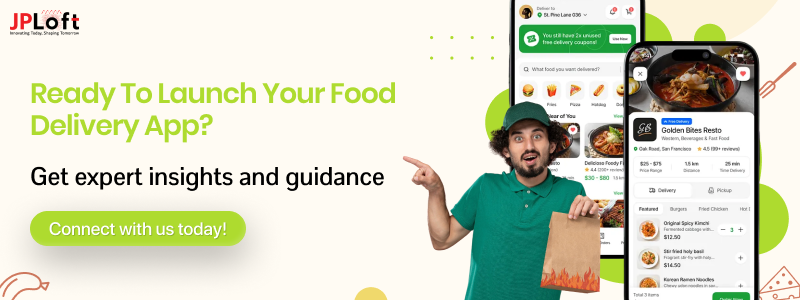 Top 10 Food Delivery App Development Challenges
Top 10 Food Delivery App Development Challenges
The food delivery industry is booming, with millions of users relying on mobile apps to order meals with just a few taps.
Behind every smooth order and timely delivery are layers of logistics, real-time data processing, user experience design, and third-party integrations.
As competition intensifies and user expectations rise, developers face numerous challenges, from ensuring scalability and security to managing delivery logistics and offering personalised experiences.
Here are some challenges along with their effective solutions.
Challenge #1: Inconsistent Pricing Strategy
One of the major challenges of food delivery apps often occurs with pricing due to fluctuating delivery fees and surge pricing during peak hours.
These rates are increased due to the high volume of orders, causing restaurants to raise their rates.
Customers may feel misled if the final cost is significantly higher than expected, especially during high-demand periods.
These inconsistencies can confuse customers, reduce trust, and lead to cart abandonment.
Furthermore, these misleading rates can contribute to the app's downfall, as users may turn to competitors in search of more consistent and transparent pricing.
Solution:
To address these food delivery app challenges, the platform can implement a transparent and standardized pricing model.
This includes clearly displaying all charges, including delivery fees and GST, minimizing unexpected fees, and using data-driven algorithms to stabilize the pricing by offering a fair price to customers.
Develop a food delivery app that not only meets user expectations but also delivers a seamless, reliable, and efficient experience across all touchpoints.
To achieve this, the development process should focus on user design with proper backend infrastructure.
Regular communication with partnered restaurants can help ensure mutually beneficial pricing that maintains competitiveness without sacrificing profitability.
Challenge #2: Operational Gaps in Order Fulfillment and Delivery Logistics
A common food delivery app development challenge is to face inefficient order fulfillment with delivery logistics.
Delayed orders often lead to frustration for both customers and management, as they deal with the negative consequences.
The lack of real-time tracking and frequent miscommunication between restaurants and delivery drivers are major contributors to these delays.
Additionally, inefficient route planning can cause drivers to arrive at the wrong location, resulting in cancelled orders and unhappy customers, all of which can seriously harm the brand’s reputation.
Solution:
To overcome this challenge, investing in advanced logistics features is essential.
Tools like smart route optimization help drivers avoid traffic by suggesting alternative routes, ensuring timely order delivery.
Modern technologies such as AI offer powerful capabilities like predictive weather with real-time route updates.
Create a mobile app that offers these interactive features that help drivers to communicate with customers and restaurants.
These integrated, automated systems have transformed the delivery process, offering greater efficiency, reliability, and convenience in getting orders to customers on time.
Challenge #3: Finding Right Development Partner
Finding the right partner in the food delivery app is the most common challenge in the industry, especially for beginners who are trying to make their space in the competition.
The market is a very saturated place with a lot of companies and consultants, making it harder to identify the real face of agencies with so many complexities, creating challenges in developing a food delivery app.
Moreover, poor collaboration or terms between parties can lead to misleading work, delaying a project.
Establishing a solid foundation through careful partner evaluation, open communication and clearly defined responsibilities is crucial for fostering effective collaboration.
Solution:
Start by researching professional firms that are experienced and can work with the food delivery sector.
Look for the best mobile app development company that understands the unique operational and technical requirements of food delivery apps, integration with restaurants, and secure payment systems.
Check their work, case studies, and verified reviews.
Attend industry events, webinars, or online communities where reputable experts are active.
Once you've identified your potential partners, conduct interviews to assess their understanding of your goals and set a clear expectation from the start about what you want.
While keeping all these points in mind, having clear communication channels is necessary, as all these food delivery app challenges can be managed through strong partnerships and effective communication.
Challenge #5: Regulatory Compliance and Food Safety
Ensuring compliance with food safety regulations is a major challenge for food delivery apps.
Different regions have varying laws regarding food handling, sanitation, and delivery standards, which can complicate the operational process.
Additionally, maintaining high food safety standards throughout the supply chain, from restaurant kitchens to delivery, is crucial but difficult, especially when dealing with third-party vendors or gig workers.
Failure to comply with these regulations can result in fines, lawsuits, or damage to the brand’s reputation.
Solution:
To address this, food delivery apps can implement a comprehensive compliance system that ensures all partner restaurants adhere to local health regulations and food safety standards.
This could include requiring certification and inspection records from restaurants before they are allowed to list on the platform.
Real-time monitoring of food handling and transportation conditions, such as temperature logs and secure, tamper-proof packaging, can ensure safety during delivery.
Additionally, providing customers with clear information about food sourcing, allergen warnings, and preparation methods will help to mitigate risks and build trust.
These practices are especially critical when you develop a grocery delivery app, where handling perishable items and maintaining hygiene standards are just as important as efficient delivery.
Challenge #6: Identifying Effective Marketing Channels
Finding the right competitive food delivery industry and selecting the right advertising methods to effectively reach your target audience is a significant challenge.
One of the important challenges of mobile food delivery app development is to work with numerous platforms.
With numerous platforms, ad types, and strategies available, ranging from all-digital ads to traditional media, food delivery apps often struggle to determine which will deliver the highest return on investment.
A poorly executed advertising strategy can result in wasted marketing budgets and low customer acquisition, while ineffective targeting may fail to convert potential customers.
Solution:
To overcome the key challenges of food delivery apps, you develop a comprehensive advertising strategy to go in-depth into market research, analyzing all consumer behavior.
Leveraging different social media platforms like Instagram and Facebook, where customers can engage with food content.
Partnering with local community outreach, like connecting with influencers who create an impression for your app.
And if you're unable to connect with influencers, you try running ads on google my business, and app stores that boost your app retention
Paid digital ads on platforms like Google Ads, Google My Business, and app stores can boost the app’s visibility and increase customer acquisition and retention.
Regular monitoring of ad performance and making necessary changes can ensure that advertising dollars are spent in the right way.
Challenge #7: Ensuring a Consistent and Seamless User Experience
Maintaining a uniform and high-quality user experience across different devices, operating systems, and network conditions can be difficult.
Variation in screen sizes, app performance issues, and inconsistent design elements often lead to user frustration, reducing the time of engagement.
With rising user expectations, even minor glitches or slow interfaces can impact retention and brand perception, making this one of the key challenges of food delivery apps in today’s competitive market.
Solution:
To address the challenge of delivering a consistent and seamless user experience, food delivery apps must focus on intuitive design, fast load times, and smooth navigation across all devices and platforms.
Implementing standardized UI/UX practices, regular app performance testing, and ensuring compatibility with both Android and iOS can significantly enhance usability.
A key food delivery app feature that it supports is its personalised dashboards and streamlined checkout process, which make the ordering experience faster and more reliable.
Additionally, real-time support, clear error messaging, and minimal downtime contribute to a reliable user journey that builds trust and encourages repeat use.
Challenge #8: Managing High Operational Costs
High operational costs can have several impacts on a company's profitability and long-term sustainability.
The cost to create an app can rise if there are inefficient processes and outdated technology, causing labour costs.
If not addressed, the problem can hinder growth, reduce competitiveness, and discourage investors from focusing on and investing in the app.
Over time, these mounting expenses can limit innovation and restrict the company’s ability to scale effectively.
Implementing automation and streamlining operations is essential to control costs and drive sustainable growth.
Solution:
To solve this problem, you can try choosing automation tools and technologies such as artificial intelligence with machines.
These features will automatically minimize manual tasks and enhance efficiency.
To manage all these food delivery app challenges, consider outsourcing to specialized vendors, which allows companies to reduce the burden and focus on their core functions.
Implementing lean management principles helps identify waste and streamline operations, while upgrading outdated systems to modern, cloud-based solutions lowers maintenance costs.
Challenge #9: Handling Customer Complaints and Support
Delivering proper convenience to customers helps build satisfaction, but it remains a challenge for businesses, especially as customer expectations continue to rise.
Poor response times, lack of empathy, inconsistent service, or unresolved issues can result in negative reviews, lost customers, and long-term damage to the brand’s reputation.
As businesses grow, these food delivery app development challenges become more frequent.
To effectively address these problems, it is essential to have the right systems in place to support management.
Solution:
To effectively address these challenges, companies should build a customer support system that is both responsive and focused on user satisfaction.
This involves training support staff in effective communication and problem-solving, leveraging tools such as live chat, chatbots, and CRM platforms to ensure quick and efficient responses, and resolving customer issues thoroughly.
Additionally, businesses should actively gather and analyze customer feedback to identify recurring problems and implement proactive solutions.
By viewing complaints as opportunities for improvement rather than disruptions, companies can continuously enhance their services while building stronger trust and loyalty among their customers.
Challenge #10: Ensuring Data Security and Privacy
In today’s increasingly digital and data-driven world, safeguarding the security and privacy of customer, vendor, and business data has become a critical challenge.
Cyber threats, data breaches, and failure to comply with data protection regulations such as GDPR or CCPA can result in substantial financial penalties, damage to reputation, and loss of customer trust.
As businesses process vast amounts of sensitive information, including payment details, personal data, and order histories, any vulnerabilities in their systems present an opportunity for malicious actors to exploit.
These issues highlight the challenges in developing a food delivery app, where robust data protection is essential to maintaining trust and compliance.
Solution:
To address food delivery app development challenges, your businesses must implement a comprehensive data security strategy that includes encryption to secure access control with regular assessments.
It is crucial to keep software and systems up to date with the latest security patches and to train employees on best practices for data handling and cybersecurity.
Additionally, companies must comply with relevant data protection regulations and conduct regular audits to ensure accountability and transparency.
By prioritizing data security and privacy, businesses can build trust with their users and protect themselves from potential legal and financial risks.
How Can JPLoft Support you in Navigating These Obstacles?
If you’re looking for a tech partner who can help you turn obstacles into opportunities, JPLoft could be the right fit.
As a leading food delivery app development company, JPLoft has the expertise to help you tackle these obstacles effectively.
Whether you're struggling with seamless integration between restaurant systems or securing payment gateways, JPLoft offers tailored solutions that meet your unique needs.
Their team not only builds robust, scalable apps but also ensures your platform is secure and optimized for growth.
What sets JPLoft apart is its hands-on, collaborative approach.
We work closely with you throughout the entire development process, providing transparent communication that offers flexibility to adapt your business to evolve.
Conclusion
Creating a successful food delivery app involves overcoming a unique set of challenges, including system integration, data security, and high operational costs.
However, with a strategic approach, businesses can develop platforms that not only meet customer expectations but also stand out in a highly competitive marketplace.
Key elements such as seamless restaurant and vendor integrations, secure payment systems, and a user-friendly interface are essential to delivering a smooth and reliable user experience.
Additionally, incorporating features like promo codes and discount coupons can enhance customer engagement and boost retention by adding value and excitement to their orders.
Prioritizing data privacy, improving operational efficiency, and ensuring clear, consistent communication across all stakeholders are critical for long-term success.
With thoughtful planning, the right technology, and a user-focused strategy, businesses can create a scalable and sustainable food delivery app that captures market attention and establishes a strong presence in today’s digital economy.
FAQs
Essential features include real-time order tracking, seamless restaurant and vendor integration, secure payment gateways, and push notifications.
Additionally, user reviews and promo codes play a key role in boosting user engagement and satisfaction.
The cost can vary widely depending on several key factors, such as the app’s functionality, feature set, platform choice (iOS, Android, or both), user interface and design complexity, and the location, experience, and hourly rate of the development team.
Building a food delivery app typically takes between 3 to 6 months, depending on the complexity of features, design requirements, and platform choice.
More advanced apps with custom functionalities may require additional time for development and testing.
One of the biggest challenges is ensuring real-time accuracy in order tracking and delivery updates, especially with increasing demand for transparency and faster delivery expectations.
This requires robust GPS integration and seamless coordination between restaurants, drivers, and users.
By leveraging AI and machine learning, food delivery apps can automate personalization, optimize delivery routes, and improve user engagement.
These technologies help meet growing customer expectations while simplifying backend operations and boosting overall efficiency.





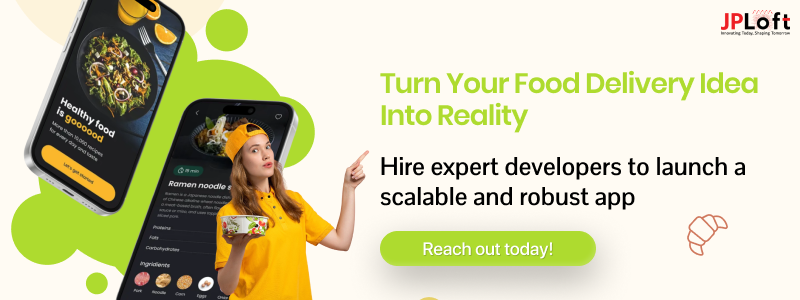

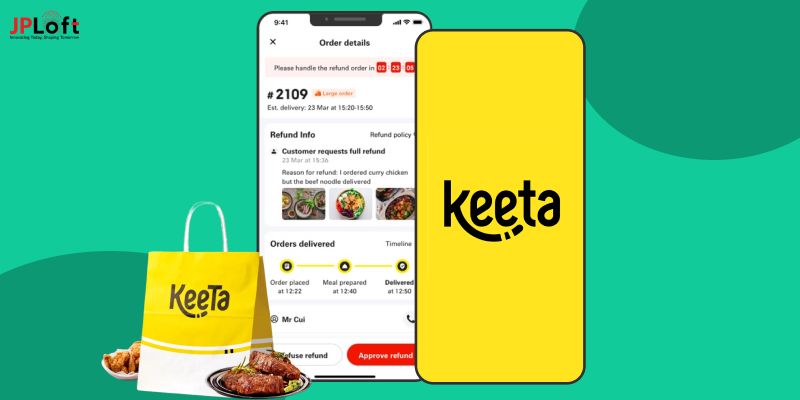
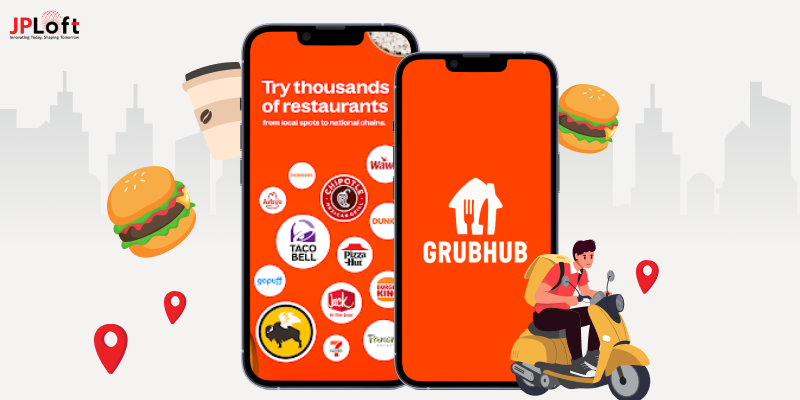
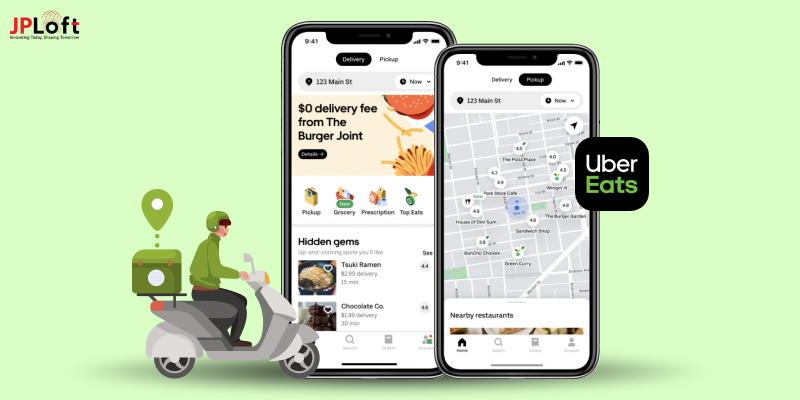


Share this blog